Whether you don't have it or just prefer a non-alcoholic option, below I share eight great mirin alternatives that can give your dishes the same sweet and tangy flavor. Look out for my recipe, where I share how to make homemade mirin using simple ingredients - it tastes great, and it's easy to make!
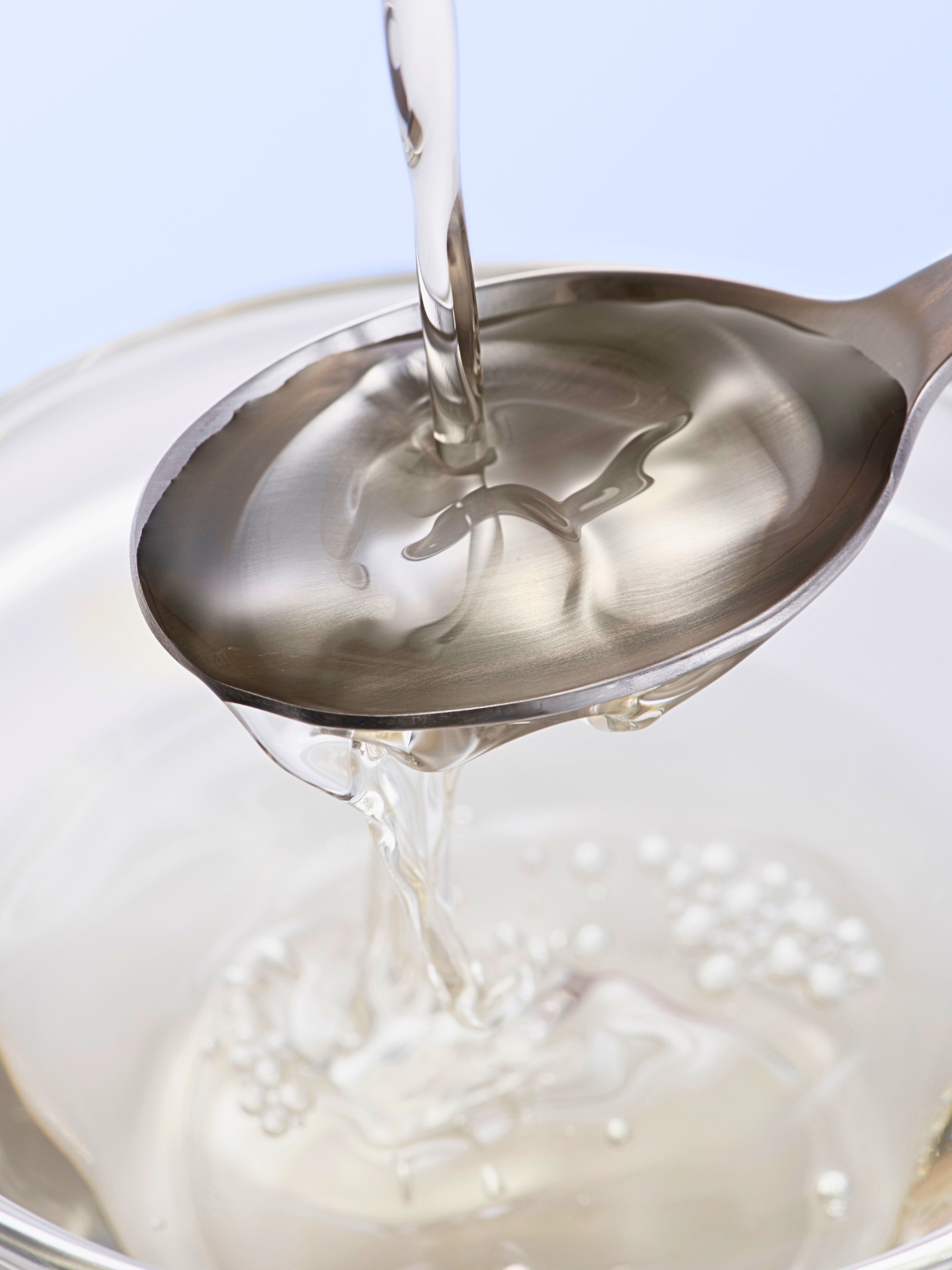
🌾 Grain Highlights
- I share the eight best substitutes for mirin, from alcoholic options like sake and dry sherry to non-alcoholic alternatives such as rice vinegar and apple cider vinegar.
- The article will also help you understand the distinctions between different types of mirin, including Hon Mirin, Aji-mirin, and Mirin-fu Chomiryo, each serving a unique purpose in cooking.
- At the bottom, you can also find my straightforward recipe for homemade mirin. It's made using common ingredients like rice wine or sake, rice syrup, and sugar. This ensures you enjoy an authentic Japanese sweet rice wine taste without any hassle.
🍶 What is Mirin?
According to USA Today, mirin is a sweet cooking wine from Japan, made by fermenting rice, koji (a fermentation starter), and alcohol. It tastes sweet with a slight tanginess, perfect for adding depth to dishes. (source)
Mirin shines in recipes by reducing unwanted fishy smells and is key in making sauces like Tsuyu, soba/udon broth, Miso, and Teriyaki sauce richer.
Unlike sake, which is mainly a drink with a higher alcohol content, mirin is used for cooking due to its lower alcohol level and sweeter flavor.
🔠 Types of Mirin
There are three main types of mirin available, and while some might be more readily found in your area, you can also conveniently order any of them online. Here's a brief overview:
- Hon-mirin, or "true mirin," is known for its authentic flavor and is produced through a fermentation process. While the alcohol content can vary, it typically ranges from around 12% to 14% or higher. The fermentation process involves combining sticky rice, rice-koji (a type of mold), and essential shochu (a distilled spirit similar to vodka).
- Aji-mirin, a mirin-type condiment, resembles the taste of true mirin but contains less alcohol, making it a convenient alternative with a similar flavor profile.
- Mirin-fu chomiryo (a mirin-like condiment) offers a non-alcoholic option. It mimics mirin's sweetness and is used primarily for its flavor rather than its alcoholic content. Each type serves a unique purpose in cooking, from enhancing the taste of sauces and broths to balancing the overall flavor of a dish.
🧾 List of 8 Best Mirin Substitutes
If you're out of mirin and need a quick fix, there are a few substitutes you can use that might already be in your pantry. Let's go through them:
1. DIY Mirin
You can make a version of mirin at home using rice wine, rice syrup, and a bit of sugar to get close to that sweet and tangy flavor mirin is known for. It's a simple mix that can save your recipe in no time. For the exact proportions and steps, make sure to check out the recipe card at the end of this post!
2. Sake and Sugar
Mixing sake or Japanese rice wine with sugar can give you a substitute that's pretty close to the real thing. Sake brings the alcohol content similar to mirin, and by adding sugar, you adjust the sweetness. A good starting point is to add about a tablespoon of sugar to half a cup of warm sake. This works well in sauces and glazes where mirin's subtle sweetness is key.
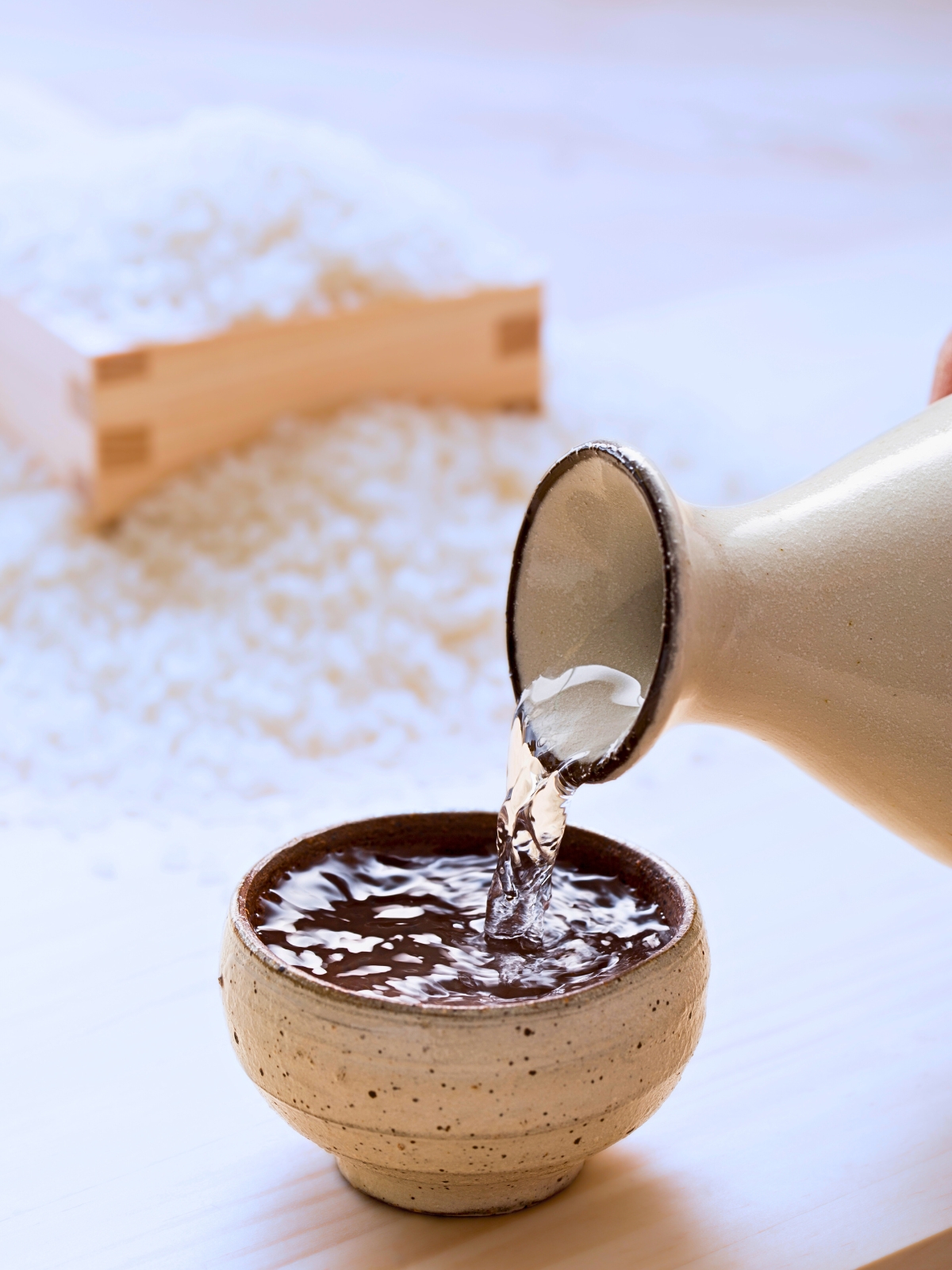
3. Rice Vinegar and Sugar
If you're looking for a non-alcoholic option, try mixing rice wine vinegar with sugar. The vinegar brings some of the acidity that you'd get from mirin, and the sugar balances it out. Just be cautious with the amounts; start with a teaspoon of sugar to a tablespoon of rice vinegar and adjust according to taste.
This substitute is great to season sushi rice; I like to use the mixture with a touch of sea salt! Try making your sushi rice with my homemade rice vinegar recipe – you'll notice a pleasant improvement in taste!
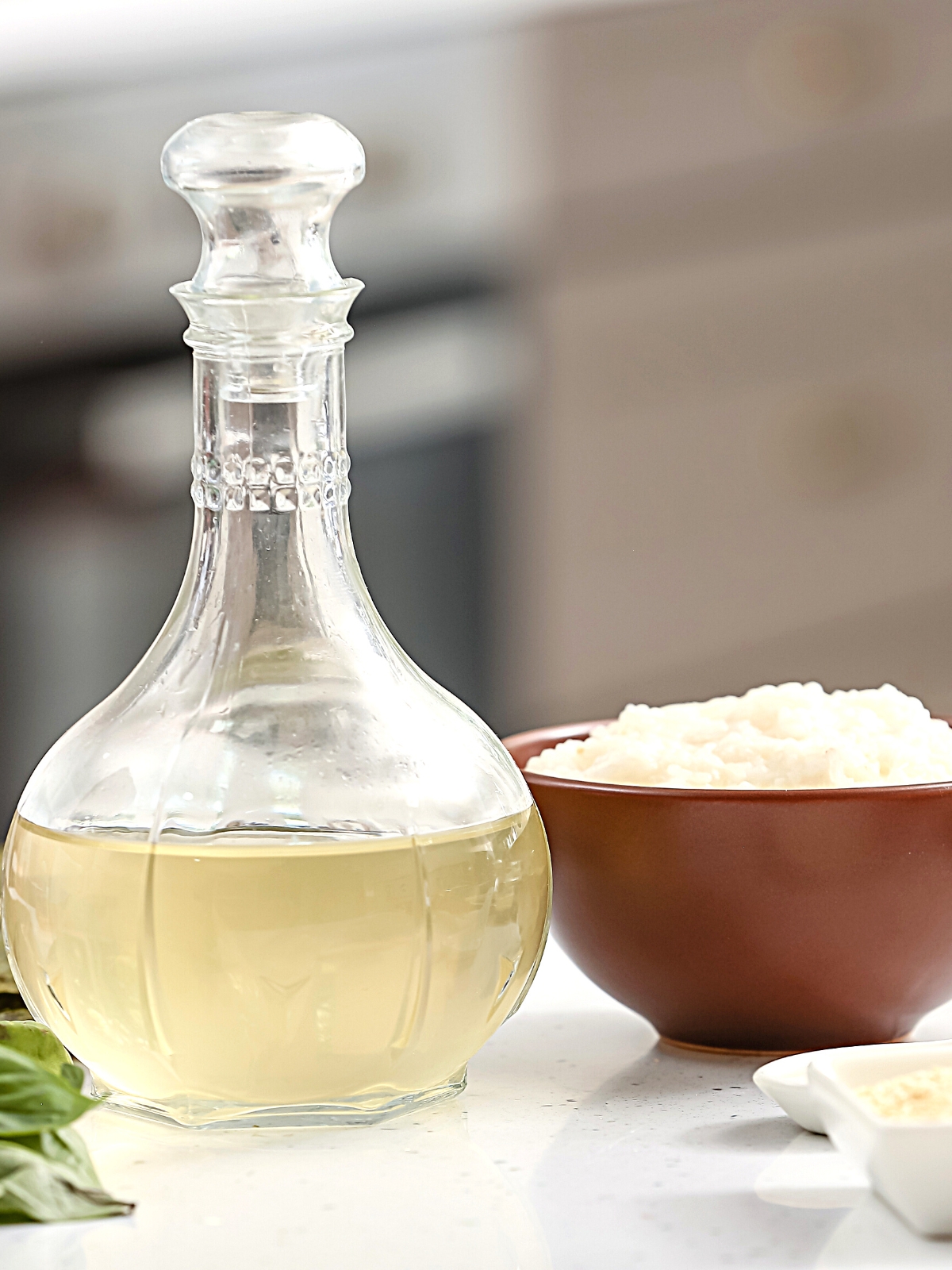
4. Dry Sherry
Dry sherry is another excellent alternative for mirin. Its rich flavor profile adds depth to dishes without needing to add sugar. Use it sparingly, as its taste is more potent. Dry sherry fits perfectly in soups and stews, giving them a complex undertone.
5. Sweet Marsala Wine
If you've got sweet Marsala wine on hand, it's a solid stand-in for mirin. Its natural sweetness and depth make it an easy swap, especially in dishes where a rich, slightly fruity undertone is welcome. I've used it in marinades, and the result is always delicious.
6. Dashi Stock and Sugar Mix
Mixing dashi stock with a bit of sugar might seem unconventional, but it works wonders in giving dishes a umami kick with a hint of sweetness, similar to what mirin would offer. It's perfect for soups and broths where that depth of flavor is key. My go-to ratio is a teaspoon of sugar for every cup of dashi.
7. White Wine and Sugar
A medium-dry white wine, when slightly sweetened, becomes an excellent mirin substitute. The trick here is not to let the wine's acidity overpower your dish, and adding sugar helps balance it out. This combo is perfect for glazes and sauces.
8. Apple Cider Vinegar and Sugar
For a non-alcoholic option, apple cider vinegar mixed with sugar does the trick too. The vinegar's tartness once mellowed with sugar, brings a brightness that mimics mirin's effect. I've found it particularly useful in dressings and when pickling vegetables. Just remember, start with less sugar and adjust to taste.
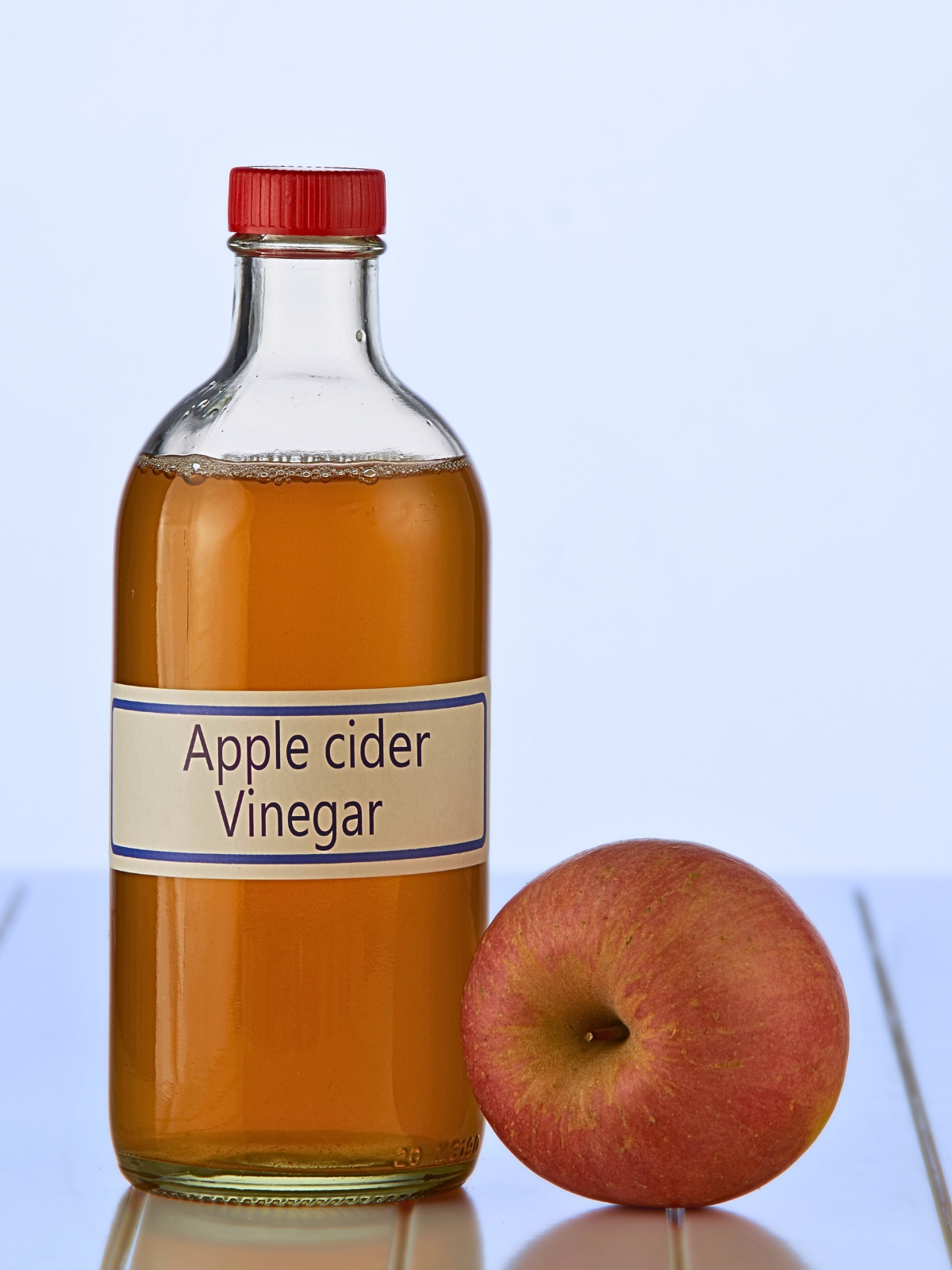
🙋♀️ People Also Ask [FAQs]
You can use various types of vinegar as a substitute for mirin, but it's important to balance the vinegar's acidity with sugar to mimic mirin's sweetness. Rice vinegar is the closest match, although apple cider vinegar also works well when sweetened.
For a non-alcoholic alternative that still performs well in marinades, you can use a combination of fruit juices like grape or apple, sweetened with sugar. The sweetness of the fruit juice coupled with the added sugar can approximate the sweet profile of mirin while also tenderizing meat in marinades.
Your homemade mirin should coat the back of a spoon lightly and run off slowly. It's not as thick as molasses but should have slightly thickened from its original watery consistency. If you find it’s too thin after cooling, gently simmer it for a few more minutes.
Honey, agave syrup, or even maple syrup can be used as alternatives to sugar. They can contribute to the overall depth of flavors but keep in mind that each sweetener brings its own unique taste to the final product, so you may need to adjust the quantity according to your preference.
🍽️ Recipe
How to Make Mirin Substitute at Home
Ingredients
- 1 cup rice wine or sake see my recipe for homemade rice wine
- ⅓ cup rice syrup
- 2 tablespoons sugar
Instructions
- In a medium saucepan, combine the ingredients. If you prefer to make your own rice wine, you can refer to my recipe for homemade rice wine.
- Bring the mixture to a gentle simmer over low heat, stirring occasionally to ensure the sugar dissolves completely. Avoid boiling as it can evaporate the alcohol and alter the flavor.
- Once the sugar and rice syrup are fully dissolved and the mixture has slightly thickened, remove it from the heat and let it cool to room temperature.
- Transfer the cooled mirin into a clean, airtight container. It can be stored in the refrigerator for up to 3 months.
Notes
- Taste the mirin during the simmering process to adjust the sweetness level by adding more sugar or rice syrup as needed.
- To achieve the ideal syrupy consistency, monitor the mixture closely while simmering to prevent it from becoming too thick or too runny.
- The quality of rice wine or sake used will significantly impact the final taste. Homemade rice wine is preferred for its purity and flavor.
- Proper storage is essential. Consider allowing the homemade mirin to age in a cool, dark place for a few days to enhance the flavors and develop a more complex taste profile.



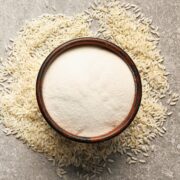

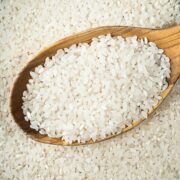
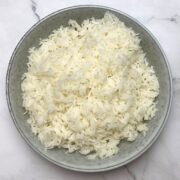
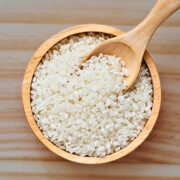
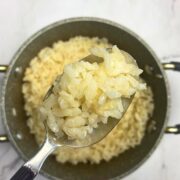
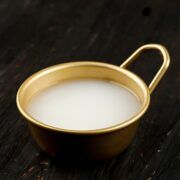

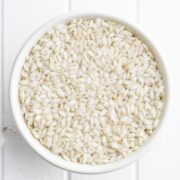

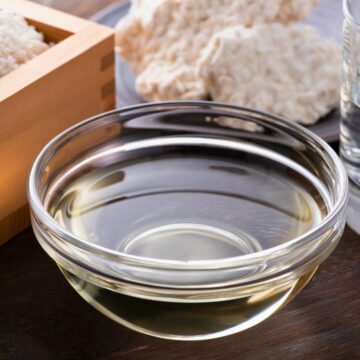
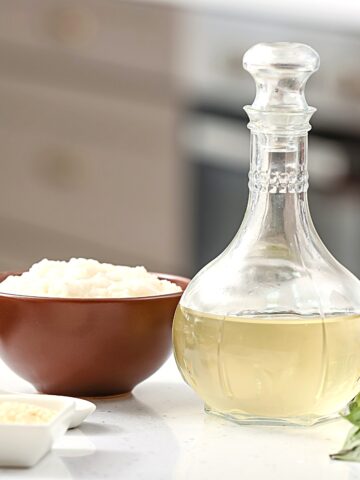
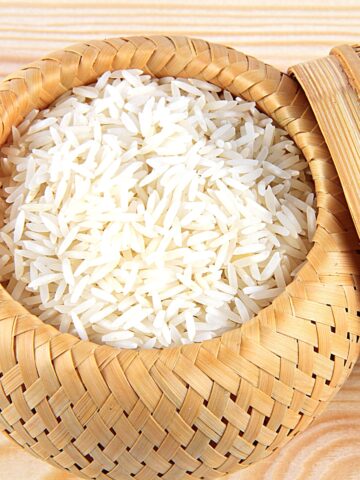
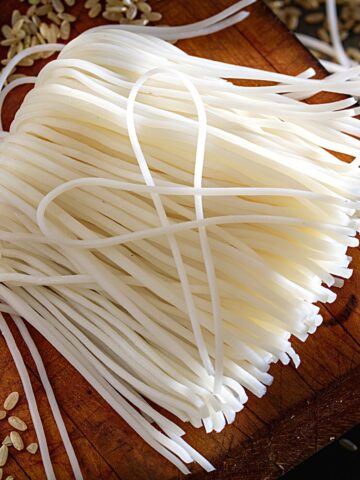
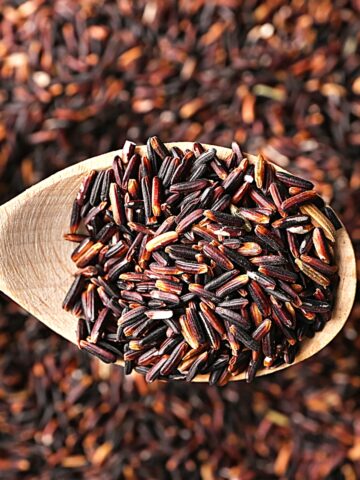
Leave a Comment